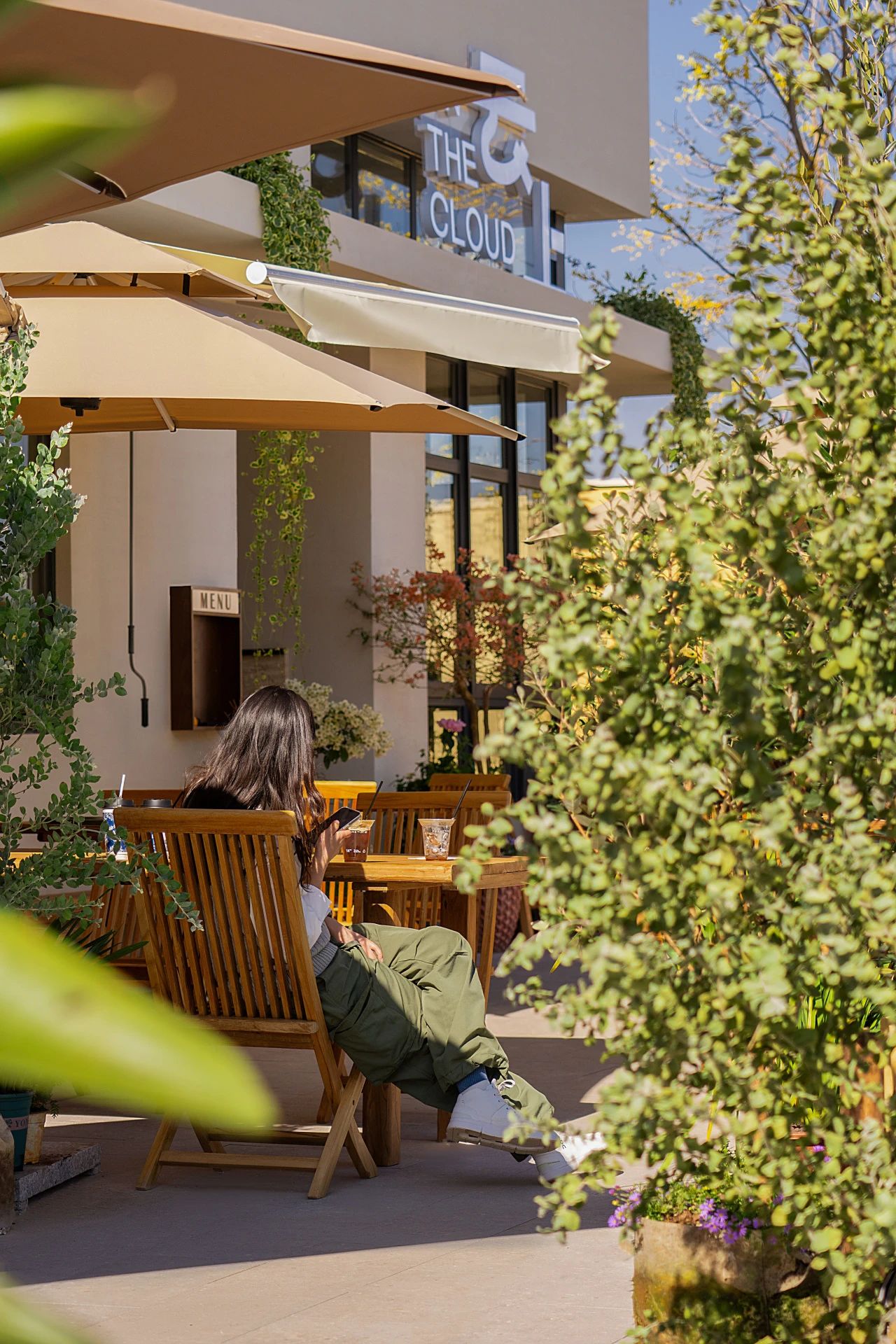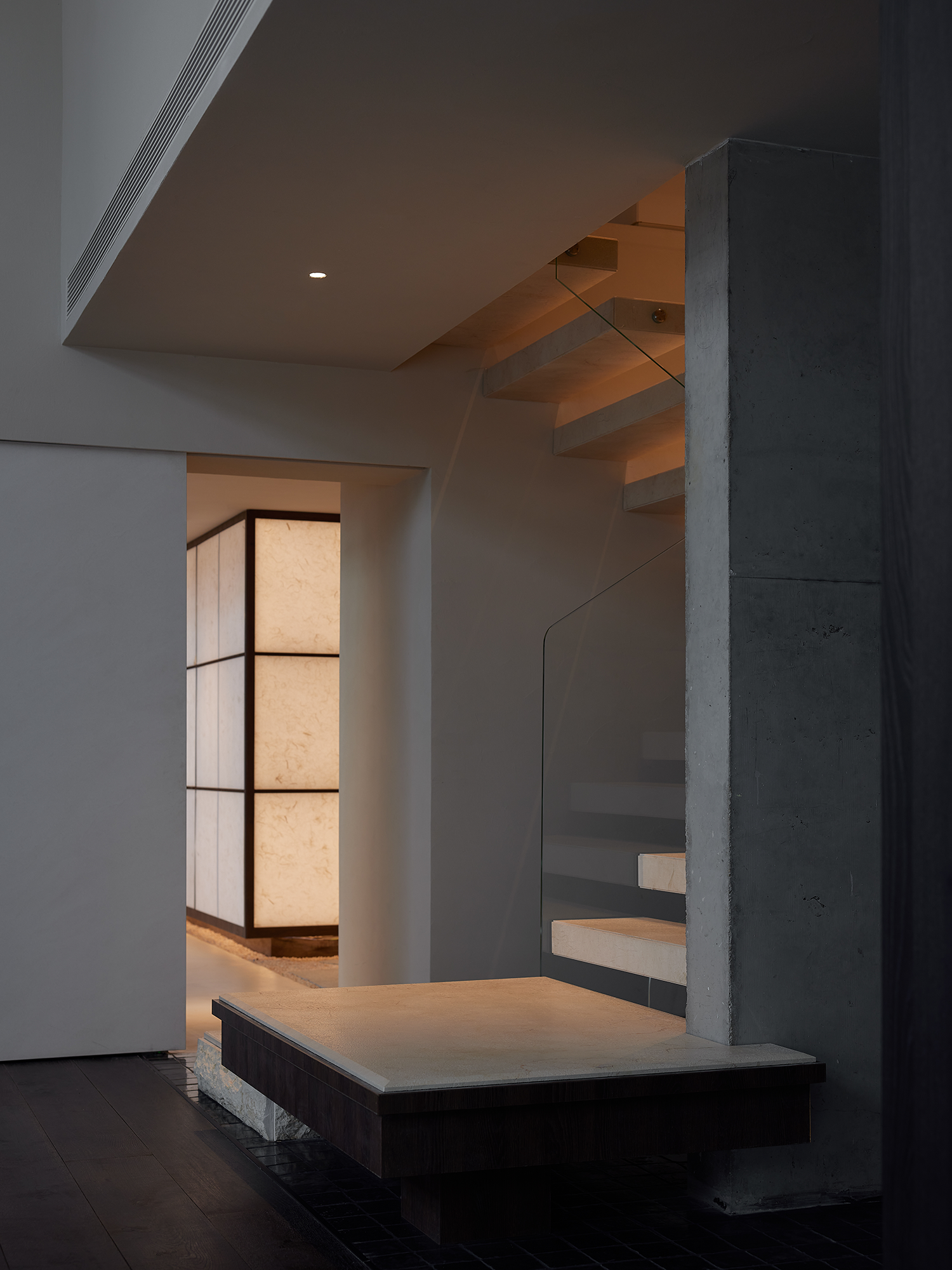Museum Proposal Displays Floating Figurines in Corten Columns of Light
2017-12-02 12:00
该项目最初的目标是在保护自然环境和农业环境的同时,提高村民对空间的利用。如今,这一遗址被当地人用作“非正式公园”、“情人的藏身之所”,甚至建筑师所描述的“猎场”。随着环境的变化,博物馆被分成了一系列独立的展馆。四个展馆是政府的展览馆。
The original goal of the project was to enhance the villagers’ use of the space while preserving the natural and agricultural environments. Today, the site is used by locals as ‘an informal park, lovers’ hideout and even hunting grounds’ as described by the architects. Responding to the environment, the museum is broken up into a series of independent pavilions. The four pavilions are The Exhibitions Pavilion, the Administration & Amenities Pavilion, the Cafe, and the Main Gate Pavilion.
Courtesy of Ziad Abi Karam for Shiogumo
Ziad Abi Karam为Shiogumo提供的服务
展览馆由永久展览“光明之林”、临时展览空间“清澈”、存储空间“空心巨石”、称为“星空云”的观察哨组成。展馆是露天的,没有物理边界来限制空间。展览空间的地板是一片白色的砾石,目的是在参观者的脚下劈啪作响,将项目与环境联系起来。让博物馆保持开放和非正式的部分决定是鼓励人们去探索博物馆文物的历史,而不是被它所吓倒,对所有的居民都是免费的。
The Exhibitions Pavilion is composed of the permanent display ‘the Forest of Light’, a space for temporary exhibitions ‘the Clearing’, a storage space ‘the Hollow Boulder’, an observation lookout called ‘the Cloud on Stilts.' The pavilion is open air and has no physical boundaries to limit the space. The floor of the exhibit space is a white gravel, intended to crackle under the step of visitors, tying the project back to the environment. Part of the decision to keep it so open and informal was to encourage people to explore the history of the museum’s artifacts, instead of being intimidated by it and is free of charge to all residents.
该考古遗址可追溯到铁器时代晚期,其中包括一座可追溯到波斯和希腊时代的寺庙。这个遗址在1946年被发现,最重要的发现是数千个在哈拉耶布大规模生产的小型陶俑。这些雕像在Shiogumo博物馆的设计中扮演着关键的角色。在整个“森林”的玉米柱,雕像似乎漂浮。在圆柱体中间的玻璃保护下,圆柱上有一个圆顶透明的顶部,这些柱子被称为太阳管漏斗灯,用来照亮陶俑。
The archaeological site dates back to the Late Iron Age and included a temple that been dated to Persian and Hellenistic ages. Discovered in 1946, the most important findings of the site are thousands of small terracotta figurines that were mass produced here in Kharayeb. These figurines play a key role in Shiogumo’s design of the museum. Throughout the ‘forest’ of corten columns, the figurines appear to float. Protected by a glass in the middle of the corten columns, and capped with a domed transparent top, the columns called solar tubes funnel light to illuminate the terracotta figurines.
行政及设施馆设有接待处、问讯台、行政人员,以及公厕和储物柜。对于最轻的足迹可能在景观上,展馆是从地面高架,允许最大限度的自然土壤保护。
The Administration and Amenities Pavilion contain the reception, information desk, administrative staff as well as the public toilets and lockers. For the lightest footprint possible on the landscape, the pavilion is elevated from the ground, allowing maximum natural soil preservation.
Courtesy of Ziad Abi Karam for Shiogumo
Ziad Abi Karam为Shiogumo提供的服务
咖啡厅座落在1969年考古学家的工作亭上-从那时起,它就被移走了,取而代之的是新的展馆。主门亭是游客在进入金地和考古遗址之前离开汽车的地方。门票,只有非居民购买,可以购买和验证在这里。
The Cafe Pavilion is sited on what was formerly the working pavilion from the archaeologists doing the dig in 1969 -- it has since been removed and replaced with the new pavilion. The Main Gate Pavilion is where visitors will leave their cars before entering the KAM grounds and archeological site. Tickets, only purchased by non-residents, can be bought and validated here.
建筑师Shiogumo建筑师主管理查德·杜兹健博士助理设计师Nada Al-Selani三维可视化Ziad Abi Karam地区1082.0平方米项目年2017年
Architects Shiogumo Architect in Charge Dr. Richard Douzjian Assistant Designer Nada Al-Selani 3D Visualization Ziad Abi Karam Area 1082.0 m2 Project Year 2017
 举报
举报
别默默的看了,快登录帮我评论一下吧!:)
注册
登录
更多评论
相关文章
-

描边风设计中,最容易犯的8种问题分析
2018年走过了四分之一,LOGO设计趋势也清晰了LOGO设计
-

描边风设计中,最容易犯的8种问题分析
2018年走过了四分之一,LOGO设计趋势也清晰了LOGO设计
-

描边风设计中,最容易犯的8种问题分析
2018年走过了四分之一,LOGO设计趋势也清晰了LOGO设计
























































































